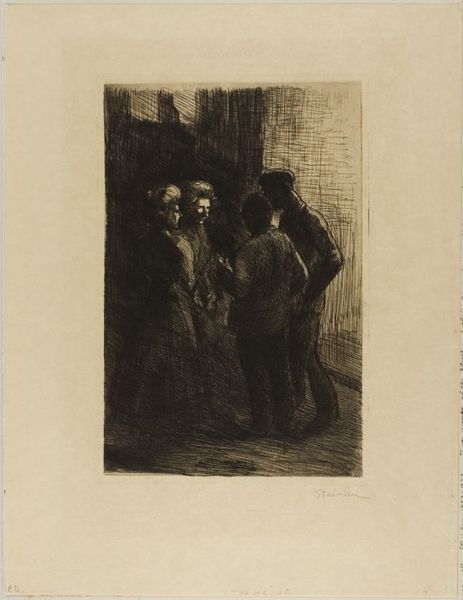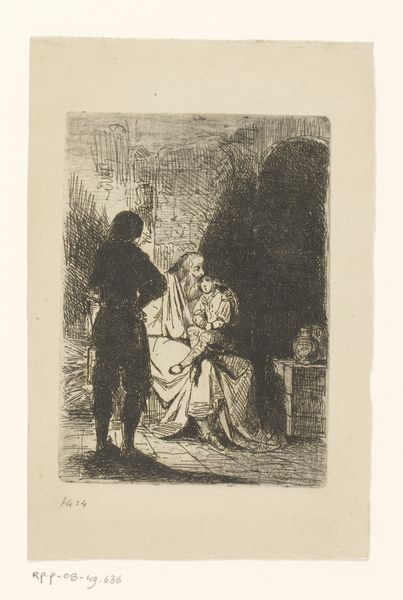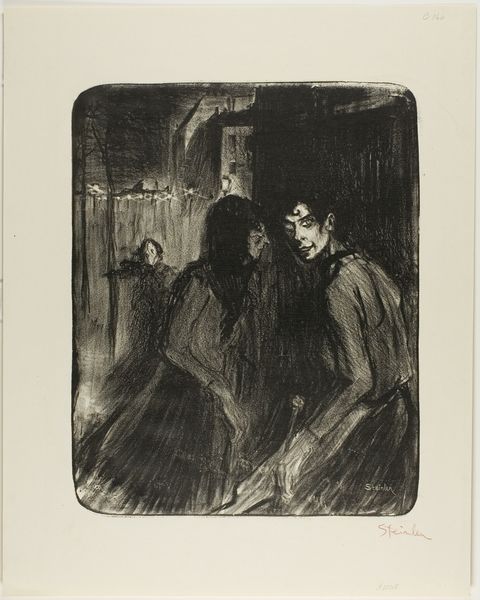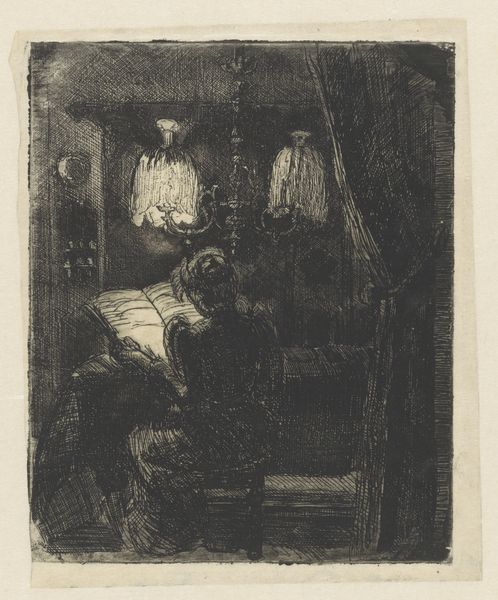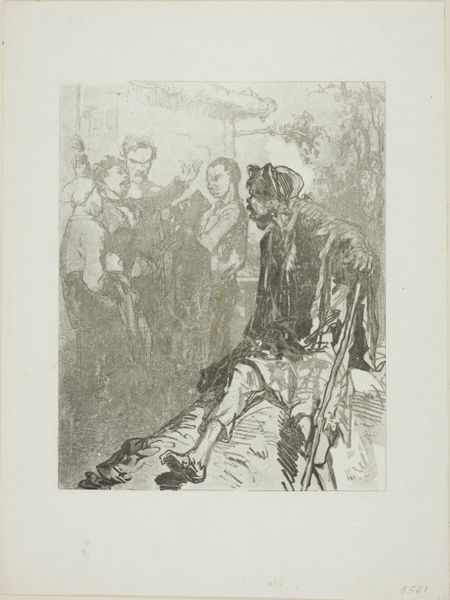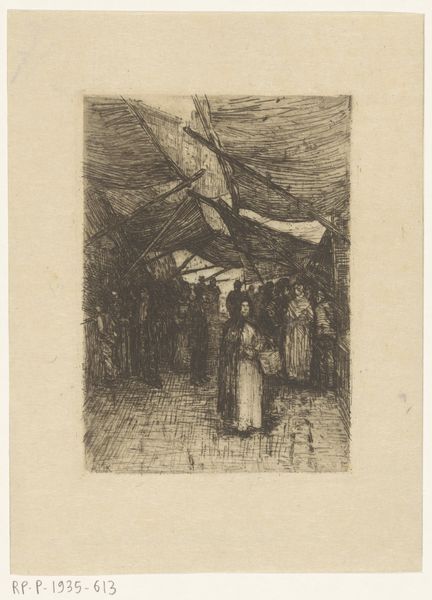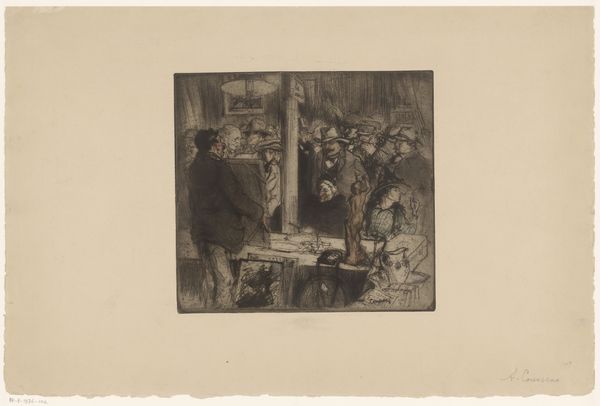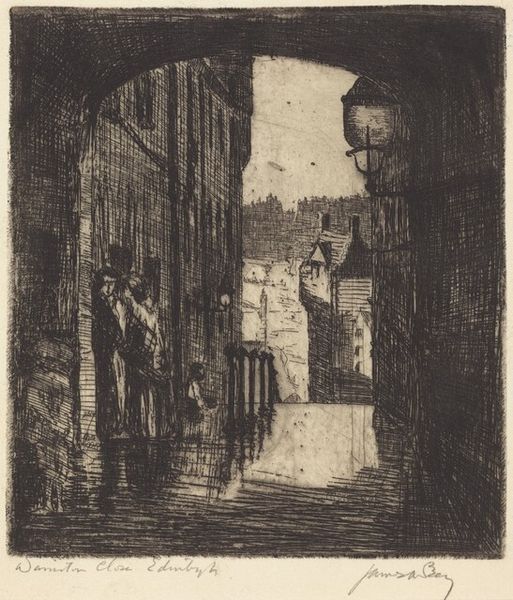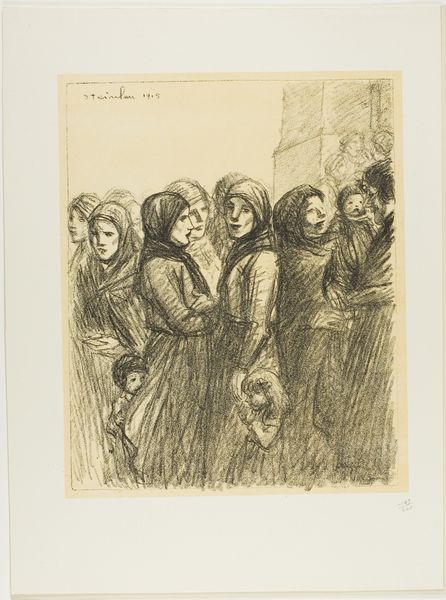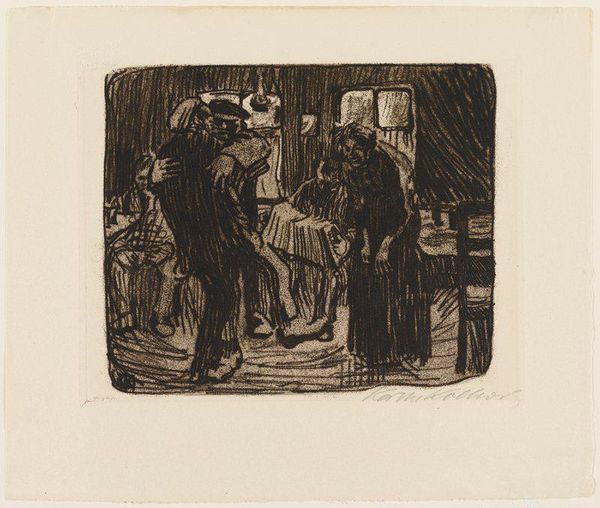
print, etching
#
portrait
#
narrative-art
# print
#
etching
#
landscape
#
figuration
#
symbolism
Copyright: Public domain
Curator: Théophile Alexandre Steinlen’s "Le Prophete," created in 1902, presents us with a poignant narrative. What’s your immediate take? Editor: Grim. The palette of etching inks here, even if monochrome, feels overwhelmingly weighted toward darkness. It’s gritty and heavy, like walking through mud. Curator: Indeed, and the choice of etching adds to that, doesn't it? There's a raw, almost visceral quality to the lines scratched into the plate and then transferred. It really suits the urban landscape, capturing a mood I see often in Steinlen's prints. Editor: The lines are crucial. They denote form but they seem almost chaotic – and how much more visceral is an etching needle to paper, than paint to canvas, say? Do you think Steinlen intended that immediacy to connect the viewer to a stark social reality? Curator: I think so, absolutely. Look at the faces. There's a vulnerability, but also a weary resignation. To me, the artist almost tries to give voice to the downtrodden. He lived among them and worked for leftist papers, illustrating real-world poverty in fin-de-siecle Paris. It's the era of Zola. Editor: You read it symbolically – I'm wondering if it depicts simply the daily grind. Were these prints aimed at middle class homes, stirring bourgeois sentiments toward charity? That print production in itself represents another industrial aspect of a changing world. Curator: Good point, and I don't disagree. Perhaps the 'prophet' figure isn't divinely inspired at all, but simply one who speaks plain truths to power, like Steinlen himself through his art. He understood that those plain truths are often very unwelcome! Editor: Right, there’s the raw material: human stories of labor and poverty reproduced as saleable commodities themselves. It's a complex exchange. What lasting impact did his chosen methods—cheaply reproduced prints for distribution—achieve, though? That's what resonates. Curator: A fascinating tension to sit with, between art, commerce, and social change. And ultimately a credit to an artwork when it leads us down such different interpretive paths. Editor: Yes. Every angle highlights the intertwined dance of artist, process, and those haunting figures in the print.
Comments
No comments
Be the first to comment and join the conversation on the ultimate creative platform.
